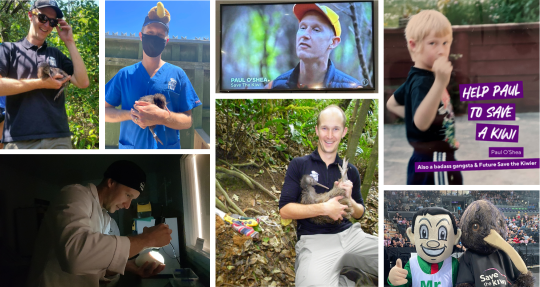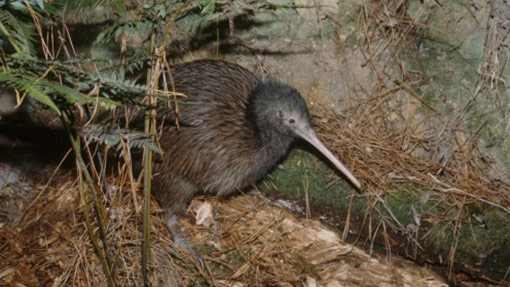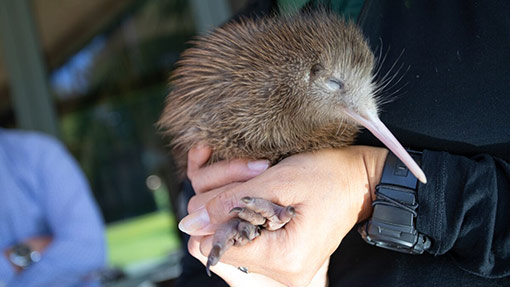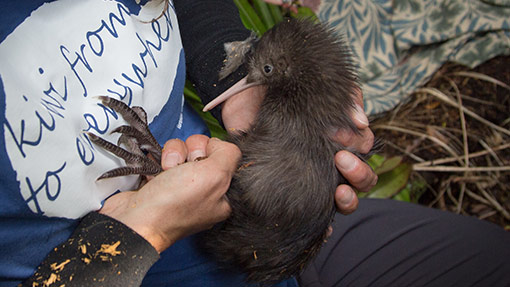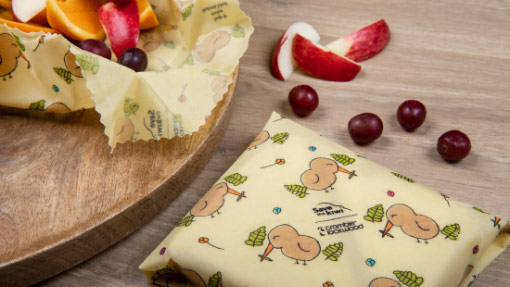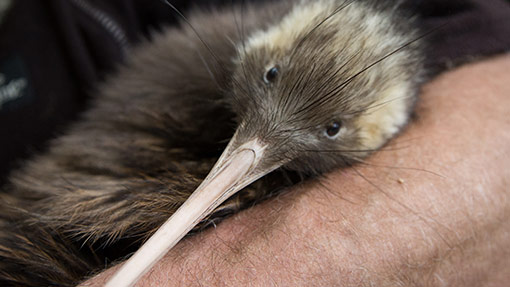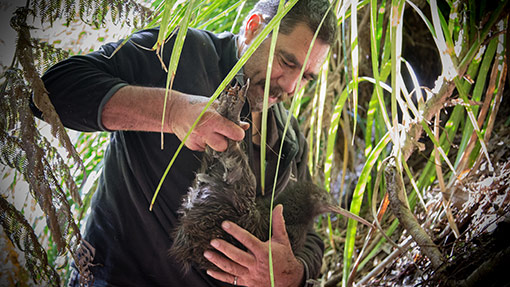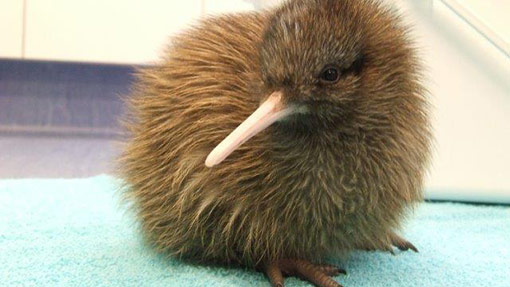J: How are you feeling about saying goodbye to Save the Kiwi?
P: I’m feeling excited for the opportunity to spread my vestigial wings and depart from Save the Kiwi after 13 years working to make a difference in kiwi conservation, and not necessarily at the shovel end of kiwi conservation but more at the email end of kiwi conservation (Not as exciting as field work, but a very important part of conservation work!). I’m so proud of the work that I’ve been a part of as an organization and as the kiwi conservation community in Aotearoa has grown from strength to strength.
J: Do you think you can share your experience starting out in Save the Kiwi 13 years ago?
P: July 2012 is when I started with Save the Kiwi. I had previously worked as a zookeeper at Auckland Zoo for six years and I wanted my next step in my conservation career to be indoors, conservation in an air-conditioned office was the dream. No more cockroaches crawling on the wall and hopefully the fridges will be cleaner [editor’s note: Paul learned that office fridges are just as dirty as zookeeper’s fridges.]. A former colleague of mine told me about the administrator role at, what was then known, as BNZ Save the Kiwi. I was lucky enough to get the role, I think an honest assessment of myself at the time was that I brought a lot of enthusiasm but potentially not the deepest knowledge pool about how offices work. But I was a quick study and Michelle gave me the opportunity to run with a number of important jobs of the organisation.
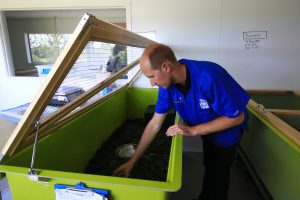
Paul re-living zoo life at the Gallagher Kiwi Burrow in 2020
Whether that was from organising the National Kiwi Hui, bringing the contestable funding rounds online to the financial management and IT infrastructure that we built for Save the Kiwi, I had support from other members of the team and some contracted expertise but it was very fulfilling being able to bring these projects to fruition..
J: Were there profound experience at any of the firsts for Save the Kiwi (then Kiwis for Kiwi)?
P: Yes! First, 20th of October 2012, the official launch of Kiwis for Kiwi from BNZ Save the Kiwi Trust was when we released kiwi onto Motutapu. It was a partnership between Ngāi Tai Ki Tāmaki, Department of Conservation, Motutapu Restoration Trust, and our organisation Kiwis for Kiwi. We heard from our chair at the time Sir Rob Fenwick that day and it was a beautiful and important day. It wasn’t the first time that kiwi had been released onto islands in the Hauraki Gulf, but this was a kōhanga, a forever home for some North Island Brown Kiwi for the Coromandel/Hauraki region. So that was a big day.
And it was also an island that’s played a huge role in my conservation journey, like it’s always been there, whether it’s been releases or volunteer days, working bee days, or just connection with the team and the people involved in my outside conservation life.
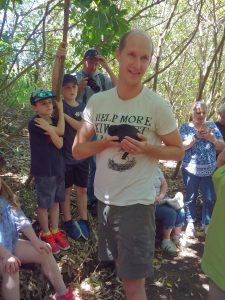
Paul releasing kiwi on Motutapu in 2019
And then, some other firsts are kiwi being released in Mataia in 2015, which was a first in mainland terrestrial Auckland. But that day was attended by, at the time, Prime Minister, Sir John Key, who asked us, “What do we do to change our 2% decline to a 2% increase?” which was the impetus for many programs like starting our kōhanga strategy, the Crombie Lockwood now Gallagher Kiwi Burrow, the Napier Kiwi Creche, our relationship with Gallagher as a sponsor, and our kiwi releases in the Wellington region with Capital Kiwi. These were all momentous occasions have come from so much work from people within Save the Kiwi and people outside Save the Kiwi.
We stand on the shoulders of giants and we work alongside so many amazing people in the community, hapū, and iwi space. Those big firsts for our organisation and for kiwi conservation in Aotearoa.
J: Did any of these experiences deeply impact you in a personal way?
P: Yes, there was, and it is associated with Motutapu. At the launch of Kiwis for Kiwi, Sir Rob Fenwick. stood up on stage and gave a mihi at the beginning of his talk. Now it might have been paragraph long, 10 lines, but I remember feeling at that moment in time that I was missing something by not understanding what was being said.
So, this was what lit the fire to make me want to start my own Te Reo Māori journey. So whether that was night classes off and on over the last 11 years to making the step last year to taking a yearlong sabbatical. Thanks again, Michelle, for letting me go to rūmaki reo, at Te Wānanga Takiura o kura kupapa Māori o Aotearoa. So, that was that moment in time that I knew it was the tika (right) thing for me to do.
J: What is it in Save the Kiwi that you’re going to miss? (besides the coffee machine)
P: The people are what make the organisation. And when I left the zoo, I was like, oh, I’m never gonna have that relationship with people that I had at the zoo. It was a special time and place and job. You don’t get that twice. And I’ve had that twice through StK. I’m really going to miss the people here.
J: Cheeky question, who are you going to miss the most? 😉
P: If I have to answer, Michelle. You can’t work with someone for 13 years, and for the first five years, it was mostly just the two of us. To be able to have that professional relationship, is truly amazing.
J: What’s that one change that you’re really proud of?
P: Us growing and becoming a proper organisation over the last several years. Looking forward, we’re – or you guys are going to achieve, the opportunities for inspiring change in conservation and casting your eyes to some pretty hefty horizons. These are going to be pretty amazing times for us as an organisation – or now for you guys as an organisation.
And so I’m just going to leave this particular interview with my hope for Save the Kiwi.
There is a famous whakatauakī (idiom) “Whāia te iti kahurangi, ki te tuohu koe, me he maunga teitei.” which translates to “Seek the treasure you value most dearly. And if you bow your head, let it be to a lofty mountain.” It basically talks about the need to set lofty goals and if you fail let it be trying to achieve something great.
Now Papa Tawhiri Williams, the tūmaki (principle) of Takiura would always add something on when he said this whakataukī to us students, now you have to picture this in the voice of an extremely kind, but somewhat gruff 80 something year old man…
“Now Climb The Bloody Mountain!”
J: Thank you, Paul! That’s really inspiring to hear a bit about your story with Save the Kiwi. No I’m itching to go climb my own bloody mountain haha I wish you the best in your new job!
Oh! And what song would you say describes the vibes of your 13 years at Save the Kiwi
P: Started from the Bottom by Drake 😊
